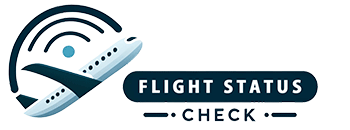The Evolution of Air Travel: A Look at EK20 Flight Status
Air travel has come a long way since the first commercial flight took place in 1914. The aviation industry has seen significant advancements in technology, safety, and efficiency over the years, making air travel the preferred mode of transportation for millions of people around the world. One of the key factors in making air travel more accessible and convenient is the use of modern flight tracking systems, such as the EK20 flight status.
The EK20 flight status is a real-time tracking system that provides passengers with up-to-date information about their flight, including the current location of the aircraft, estimated arrival and departure times, and any potential delays or disruptions. This system allows passengers to plan their travel more effectively and stay informed about the status of their flight, reducing the stress and uncertainty that can often accompany air travel.
But how exactly does the EK20 flight status system work? The process begins with the installation of advanced tracking devices on the aircraft, which continuously transmit data about the aircraft’s position, speed, altitude, and other relevant information to ground-based monitoring stations. This data is then processed and relayed to the airline’s operations center, where it is used to update the flight status information available to passengers.
One of the most impressive aspects of the EK20 flight status system is its ability to provide accurate and reliable information in real-time. This is made possible by the use of sophisticated satellite communication and navigation technology, which allows for the continuous monitoring and tracking of aircraft, even when flying over remote or oceanic regions. As a result, passengers can have peace of mind knowing that they can stay connected to their flight, no matter where they are in the world.
In addition to providing passengers with valuable information about their flight, the EK20 flight status system also plays a crucial role in ensuring the safety and security of air travel. By continuously monitoring the location and performance of aircraft, this system enables airlines to quickly respond to any potential emergencies or incidents, reducing the risk of accidents and ensuring the well-being of passengers and crew.
The EK20 flight status system has also proven to be an invaluable tool for airlines and aviation authorities in improving the overall efficiency and reliability of air travel. By analyzing the data collected from the flight tracking system, airlines can identify trends and patterns in flight operations, optimize their scheduling and route planning, and minimize the impact of external factors, such as weather conditions or air traffic congestion. This ultimately leads to a more streamlined and punctual air travel experience for passengers.
As air travel continues to evolve and grow, so too will the capabilities and benefits of flight tracking systems like the EK20 flight status. With ongoing advancements in technology and data processing, these systems will become even more sophisticated and integrated, further enhancing the convenience, safety, and efficiency of air travel.
In conclusion, the EK20 flight status system represents a significant milestone in the evolution of air travel, providing passengers with real-time information and peace of mind, while also contributing to the overall safety and efficiency of the aviation industry. As we look to the future, it is clear that flight tracking systems will continue to play a vital role in shaping the way we experience air travel, ensuring that we can always stay connected and well-informed, no matter where our journey takes us.

Leave a Reply